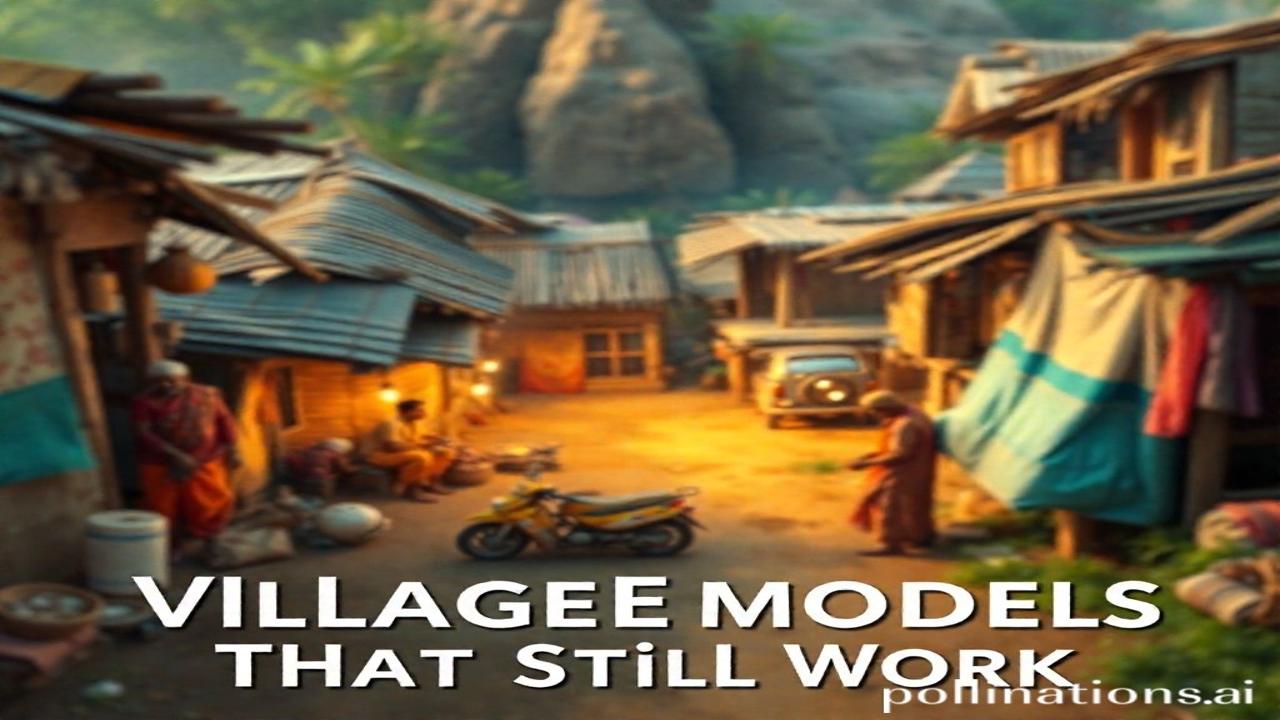Gaaon Ki Mitti Mein Dabi Kahaniyaan: Village Economy Models That Still Work
Kabhi socha hai, shehar ki chamak-dhamak se door, gaon ki mitti mein kya raaz chupe hote hain? Waqt ki dhool un raaz ko dhundla toh karti hai, lekin unki khushboo aaj bhi hawa mein basi hui hai. Woh khushboo hai aatm-nirbharta ki, samuhik prayas ki, aur prakriti ke saath samanjasya ki. Hum baat kar rahe hain un village economy models ki jo aaj bhi, badalte hue daur mein, apna vajood banae hue hain.
Village Economy Models: Ek Jhalak Itihaas Ki
India ki history mein, gaon hamesha se backbone rahe hain. What is this? Village economies basically self-sufficient units the, jo apne local resources aur skills ke balboote par thrive karte the. When and where did it happen or originate? This model evolved over centuries, starting from the Indus Valley Civilization till the British rule, each era adding its own layer. Why is it important in our history or culture? Kyunki yeh model na sirf economic stability deta tha, balki ek strong community spirit bhi banaye rakhta tha. Imagine, Mughal Emperor Akbar ke zamane mein bhi, gaon apne aap mein ek chhoti si duniya the, jahan kheti se lekar craft tak, sab kuch locally manage hota tha. Angrez toh aake yeh system todne ki koshish kiye, lekin gaon ki mitti mein dum tha, woh poori tarah se toot nahi paya.
Zameeni Sach: Logo Aur Jeevan
Chaliye, ek pal ke liye kisi gaon mein chalte hain. Ma Rukmini apne charkhe par baithi hui hai, geet gaate hue sooti kat rahi hai. Unke pati, Kishan kaka, khet mein hal chala rahe hain. Gaon ke bachche nadi kinare khelti, hilkoriyan mar rahe hain. Din bhar ka kaam khatam karke, sham ko sab log choupal par ikattha hote hain, apne sukh-dukh baat te hain.
“Ram-Ram Kisan Kaka!”
“Ram-Ram Beta! Aaj fasal kaisi hai?”
“Badiya hai Kaka. Par paani ki thodi dikkat hai.”
“Koi na. Gram Panchayat mein baat karenge. Milke hal nikalenge.”
Yeh dialogue sunne mein simple lagta hai, lekin ismein chupa hai gaon ka asli mantra: Community support and collective problem-solving. Pehle, each caste or community had its specific role – potters, weavers, blacksmiths, farmers – sab milkar ek dusre ko support karte the. This wasn’t just about economy; it was a way of life, a social contract.
Dharohar Aur Pehchaan: Aaj Bhi Zinda
Aaj bhi, hum Bharat ke kai hisson mein un village economy models ki jhalak dekh sakte hain. Do we see its presence in rituals, art, architecture, festivals, language, or values today? Khadi production, handloom weaving, organic farming – yeh sabhi examples hain jo dikhate hain ki gaon ki aatm-nirbharta ka spirit aaj bhi zinda hai. Gaon ke haat (local markets) aaj bhi local artisans aur farmers ko ek platform dete hain.
Aur, dekhiye, ‘Bharatiyata’ isme kaise chupi hai. Connect it to Bharatiyata (Indianness) and modern identity. This focus on local resources, community support, and sustainable living is deeply ingrained in our culture. Yeh values Gandhi ji ke ‘Gram Swaraj’ ke vision ko bhi darshate hain.
Majedaar Tathya Ya Bhram-Bhanjak:
Log samajhte hain ki village economy ka matlab hai pichda hua hona, lekin asli sach yeh hai ki sustainable development ka yeh ek bohot powerful model hai. Shocking truths/Misconceptions/Rare trivia. Village economies carbon footprint kam karti hain, cultural heritage preserve karti hain, aur local communities ko empower karti hain. Even in this digital age, the principles of village economies can be adapted to create more resilient and equitable systems.
Drishya Aur Bhavnayein:
Imagine the scent of freshly baked bread from the village oven, mixed with the earthy smell of the soil after the rain. What did the air smell like? The temple bells echoing through the narrow lanes, followed by the rhythmic sound of the loom. What sounds echoed in the streets? The rough texture of the handmade pottery, telling tales of ancient traditions. How did the temple walls feel? Yeh sabhi cheezein ek aisi duniya banati hain jo shahar ki bhagdaud mein kho si gayi hai.
Antim Vichar Ya Uddharan:
“Vasudhaiva Kutumbakam” – the world is one family. This ancient wisdom echoes in the principles of village economies. Let’s learn from our past, celebrate our heritage, and build a future where the values of sustainability, community, and self-reliance thrive.
Shanti, Shanti, Shantihi.
